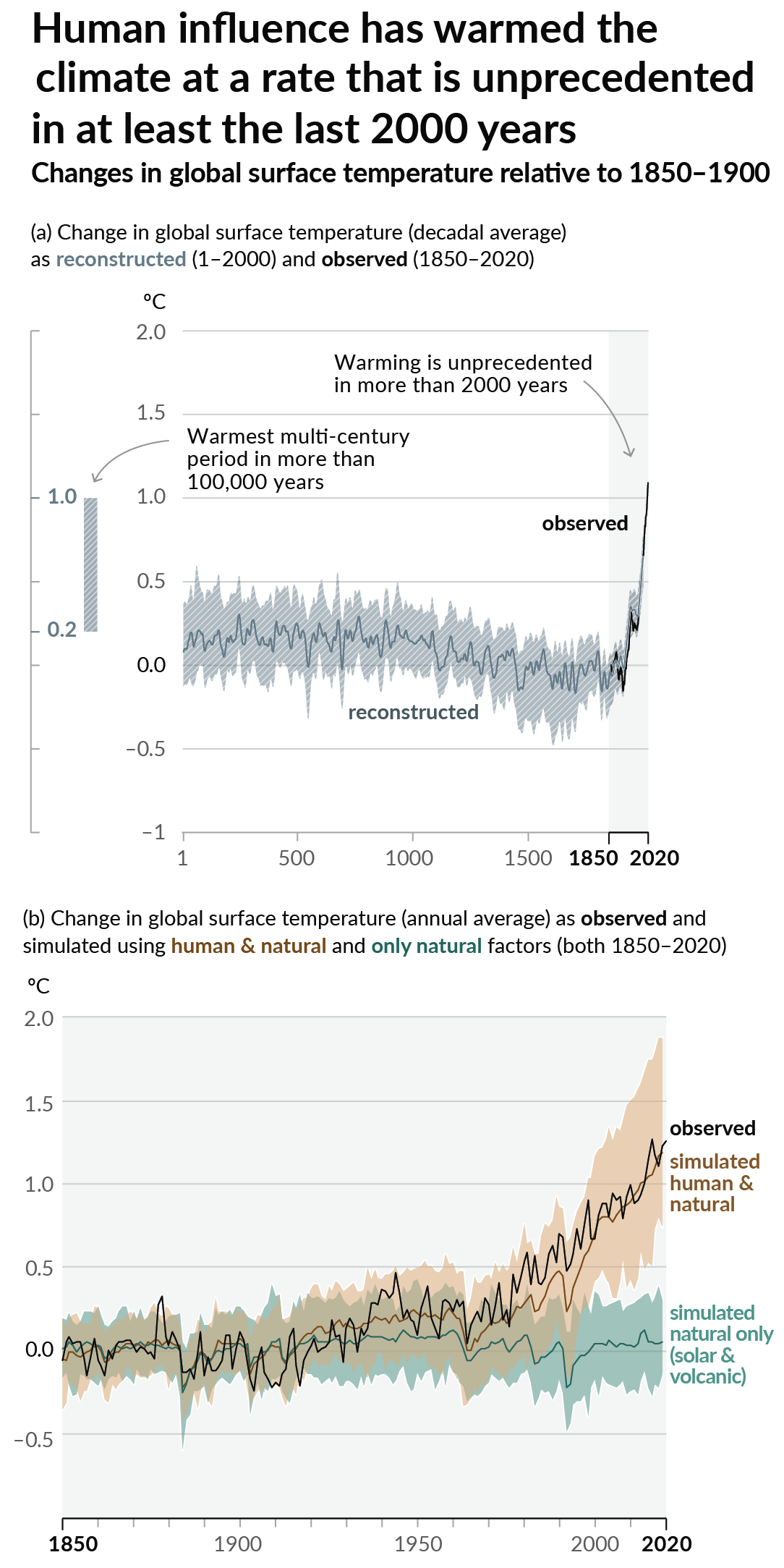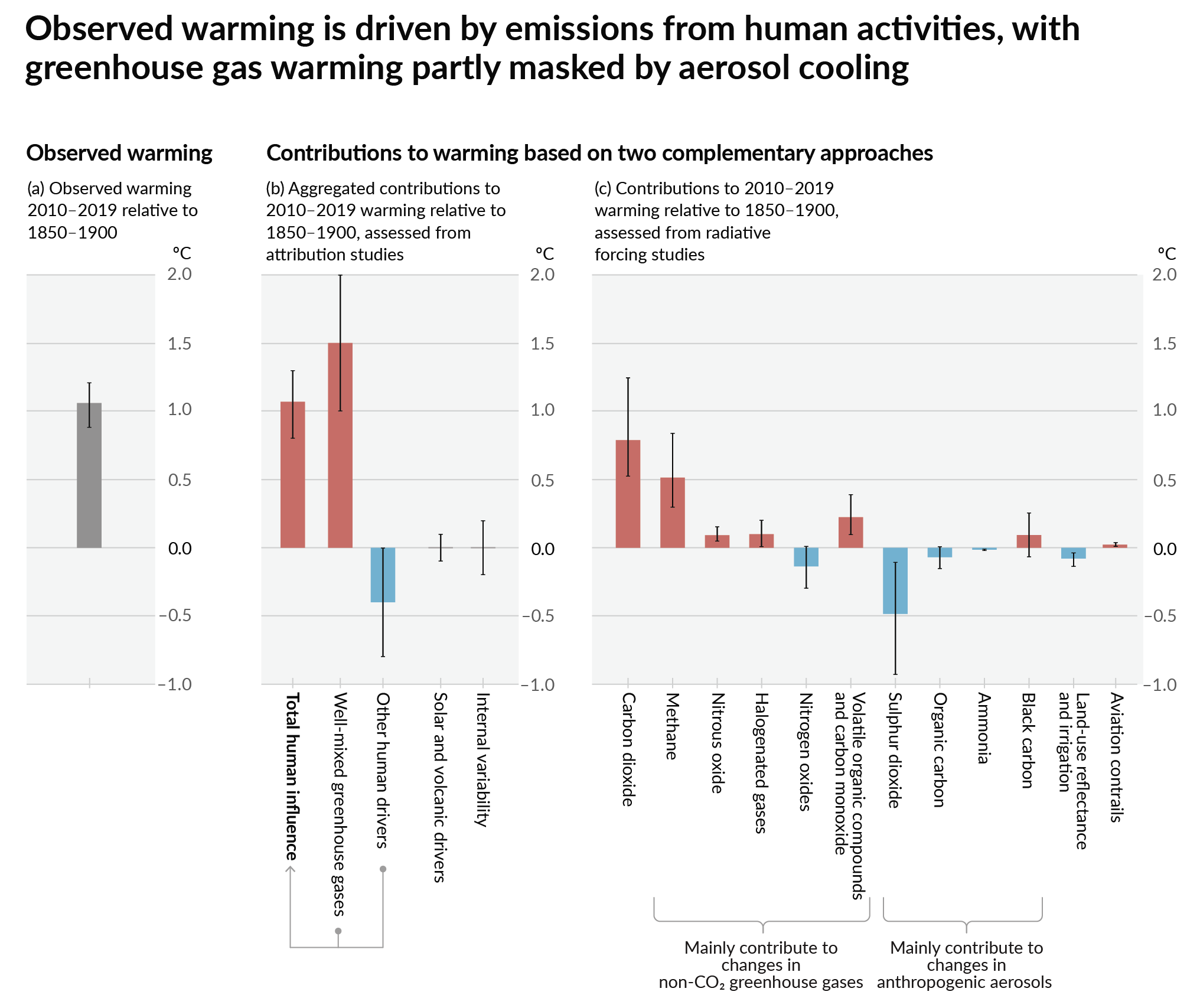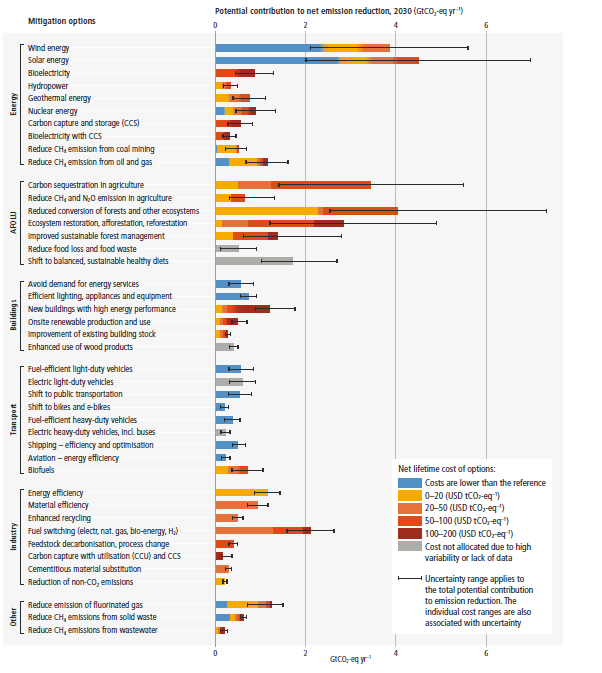442
Eating Meat Is Bad for Climate Change, and Here Are All the Studies That Prove It
(sentientmedia.org)
Discussion of climate, how it is changing, activism around that, the politics, and the energy systems change we need in order to stabilize things.
As a starting point, the burning of fossil fuels, and to a lesser extent deforestation and release of methane are responsible for the warming in recent decades:

How much each change to the atmosphere has warmed the world:

Recommended actions to cut greenhouse gas emissions in the near future:

Anti-science, inactivism, and unsupported conspiracy theories are not ok here.
The biggest polluters are
Agriculture (fertiliser, wild rodents, diesel, animals, rotting plants, not including plants wasted by consumers) is only 10%
We're making the best inroads into electricity. It is clearly possible and economical to convert all electrical grids to carbon neutral technology
We're starting to convert residential and commercial to entirely electric (except for the carbon and methane emissions from humans and pets, especially ones that eat beans) so that 13% is solvable
So at the moment 38% of greenhouse gases are easy, just needing political will
Another 23% is harder, industry needs some inventions, especially a green steel making process, and a green concrete making process. Both are years away and probably possible
Transport is hard. 6% is personal transport. That's easy to electrify. Trucking is harder, planes are harder still. I don't know how feasible wind power is for shipping, at least the trade winds blow the right way for Asia to America
The best bet for transport was a green liquid fuel, but the company trying to grow diesel from bacteria folded several years ago.
We are never going to decarbonise agriculture by abandoning any part of it. We can do a bit by practicing permaculture - that keeps more carbon in the ground; we can clean up animal agriculture by not feeding cattle human food, let them eat grass, and there is promising technology for reducing their (and other ruminants') methane emissions by feeding them seaweed
If we waved a wand and removed all farm animals from the world it wouldn't make a dent in carbon emissions or methane, cows would be replaced by deer which also make methane in exactly the same way cows do, but with no one feeding them seaweed
Uneaten grass would rot and be turned into methane (it's the same bacteria that work in cow and deer guts to break down grass). No one's treating rotting grass with seaweed.
Our best bet is to keep the marginal lands occupied by cattle and regulating people running cattle, requiring them to minimise their animals' emissions, or offset them
*Edited to fix typos
It looks like you're citing the EPA estimates for US GHG emissions by sector: https://www.epa.gov/ghgemissions/sources-greenhouse-gas-emissions
Unfortunately this is only a small part of the overall picture. For instance, it notably doesn't include carbon sinks (areas that have a net reduction of GHG) like protected wild lands. One of the biggest climate issues is deforestation, since it not only produces emissions, but also damages the earth's ability to sequester CO2. https://thehumaneleague.org/article/meat-industry-deforestation-cop26
In fact, if you look at total land use, an alarming percentage of habitable land is being used to produce meat and dairy, accounting for a relatively small percentage of protein and calorie consumption.
You also have to be careful using GHG emissions as your only metric. Animal agriculture is a major contributor to many of the environmental issues we face:
Biodiversity loss and mass extinction attributed to deforestation and use of land for agriculture.
Antibiotic resistant bacteria resulting from overuse of antibiotics to promote livestock growth.
Eutrophication and dead zones from fertilizers used to produce animal feed and runoff from farms.
Zoonotic diseases which very often originate in livestock before jumping to humans: see swine flu, avian flu, etc.
Additionally, the claim that eliminating livestock would result in a 1:1 replacement in wild mammals is patently false. Livestock is farmed intensively, whereas wild animals live in areas that are, again, carbon sinks. Just looking at the numbers, wild mammals are only a tiny fraction of mammalian biomass, with the vast majority being humans and livestock.
Considering the greater picture, the best bet is for those who are able to eliminate their consumption of animal products to do so.
The problem is only 9% of the beef production and 30% of global sheep and goat production are feed using grazing. The rest so most of them are feed using some form of human edible plants and they would not be replaced by wild animals. Furthermore it is something, which can be easily done today. We would still be able to produce enough food for every human on the planet and it would even be easier, as all the feedstock for animals would no longer be needed. So it really is a nice and easy few percent to get, which pretty much everybody can easily do themself.
https://www.fao.org/3/X5303E/x5303e05.htm#chapter%202:%20livestock%20grazing%20systems%20&%20the%20environment
I can opt to significantly reduce my impact for no extra money in one of these sectors.
Self reply. I wonder what the climate impact of my compost pile is. Should I add seaweed? I live a long way from the sea, is the pile worse than a 400km round trip (presuming the right weed grows in the nearest bit of sea).
I hope fixing electricity, residential, commercial, transport, and industry is enough. The world could handle the carbon load of the same sort of biomass as we have now before we started burning all the oil